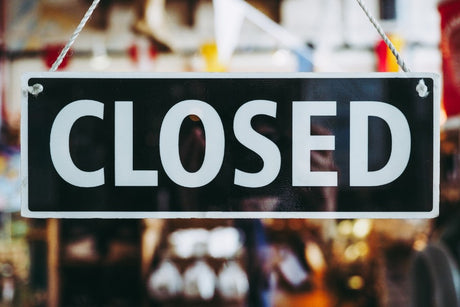Australian retail experiences a seismic shift.
It's the start of the 2020 financial year, and traditional retail models of brick-and-mortar storefronts, which served so successfully over many centuries of trade, are now struggling to survive against a broad attack from focused, niche online specialists.
You can't call it a battle for good versus evil; it's just a different offer and value proposition where the customer gets to decide.
Commentators refer to it as "disruption", and it's happening in every type of industry and market segment.
Landlords and the corporate giants who own expensive shopping malls and complexes have been running carefully crafted campaigns of denial, deflection and all sorts of PR spin to re-write negative headlines to help avoid any potential damage from slumps in consumer confidence.
However, some smart retailers could already see how the retail landscape had changed.
In our 2018 articles, we commented on the demise of strip shopping and the potential elimination of smaller shopping centres.
Many of the smaller malls located in regional areas of Australia have seen a first wave of "retail downturn" in the retail segment.
Mall owners have been scrambling with a frenzied rate of sales and trading ownerships of these smaller complexes.
Apparently, by the last count, there's around $11B in shopping centre assets up for trade.
It represents approximately three years' worth of transactions.
That's an alarming and rather negative signal of market distress, part of which could be due to the current economic climate.
The recent surge in selling was attributed to the scarcity of capital that was once easily available at lower rates.
If you can believe the corporate spin, they call it "re-balancing portfolios", but these Centre owners are determined sellers offloading poor-performing assets with no visible or practical signs of future positive upside.
The smaller centres are assets weighed down by rising land values and softening yields.
For owners, it's much easier to dispose of the investment than fix it.
When tenants or traders move out, spaces are not quickly released and sit vacant for long periods.
The lower foot traffic hurts remaining traders, and they, in turn, start to worry and plan their exit strategies, snowballing like a contagion.
You only need to look at Melbourne's doomed Docklands precinct - a retail anchor that's consistently failed to perform for almost two decades.
Even previously successful areas like Chapel Street and Richmond's Bridge Road have declined and faded into insignificance - retailers and merchants are avoiding the zones as if they are cursed or toxic.
The only hope for these areas is when risk-averse entrepreneurs see an opportunity or potential future in converting smaller, unloved shopping spaces to residential apartments by building up into the sky.
Rebuilding will only occur once the valuations hit rock bottom.
Developers enter to work out questionable approval deals with incompetent councils or planning authorities.
How did all this change so fast?
In the period between 2014 through 2018, there was a boom in smartphones and tablets.
As these devices became addictively embedded into our everyday existence, consumers soon avoided the effort involved in physical shopping and instead shifted to the alluring convenience of researching and purchasing online from the comfort of their couch.
The NAB's recent announcement in early June 2019 stating Australian retail was officially in recession stirred up a raft of analyses by commentators prospecting for newsworthy gems.
Comparing growth numbers of bricks and mortar to online only serves to amplify the contrasting fortunes.
NAB's declaration of the recession in retail ironically came just days before Wesfarmers announced their $230M purchase of Catch Group (subject to ACCC approval) - a fast-growing online marketplace specialist.
Wesfarmers' move to snare Catch is an interesting strategic play.
On paper or in theory, it sounds smart and canny.
Wesfarmers has spent years trying to either fix or offload their troubled Target business, and now, faced with a highly successful turnaround of Kmart, the Target problem still needs to be solved.
Acquiring a pure-play online marketplace is a seriously hard pivot by Wesfarmers to rescue the future of their Australian retail brands (excluding Bunnings and Officeworks, which both perform exceptionally well).
Kudos to Wesfarmer's executives for acting early by kick-starting a radical transformation for businesses that are still generating more than half a billion $$ in profit instead of waiting until they turned into toxic loss-makers and empty shells.
It also helps Wesfarmers accelerate the closing and downsizing of Wesfarmmer's retail store footprints.
This move was a defensive play to compete with Amazon using a richer omni-channel capability.









